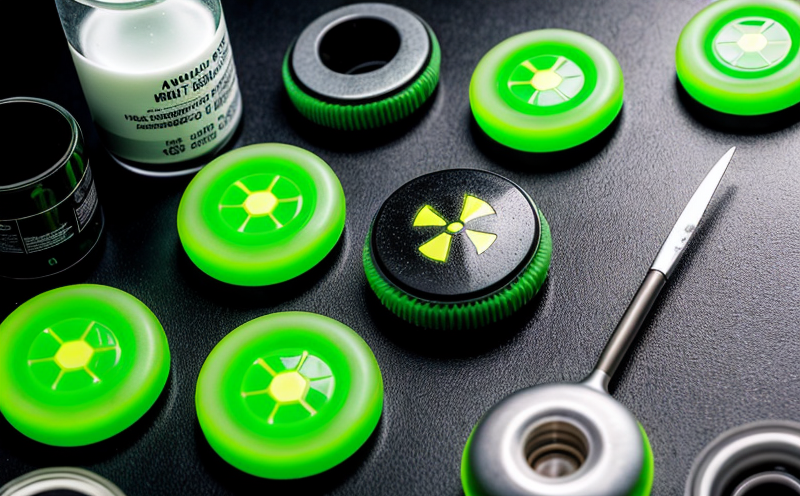ISO 18589 Gross Alpha and Beta Activity Measurement in Food Samples
The ISO 18589 standard outlines a robust method for measuring gross alpha and beta activities in food samples. This service is critical for ensuring the safety and quality of food products, particularly those that are intended for infants, young children, and people with compromised immune systems.
Gross alpha and beta particle emissions can be indicative of various contaminants such as radionuclides from natural or artificial sources. The presence of these contaminants in foodstuffs is a significant concern due to the potential risks they pose to human health. Compliance with this standard ensures that food products meet regulatory requirements, thereby protecting consumers.
The testing process involves several key steps: sample preparation, measurement using appropriate instrumentation (such as low-background gamma ray spectrometers), and analysis of results against established limits. The primary goal is to ensure that the alpha and beta activities in food samples do not exceed safe levels specified by international standards like ISO 18589.
Our laboratory uses state-of-the-art equipment and follows stringent protocols to deliver accurate, reliable test results. We employ experienced technicians who are trained specifically for handling radioactive materials safely and effectively. This ensures that every sample undergoes thorough examination under controlled conditions.
The importance of this service cannot be overstated, especially given the increasing global focus on food safety and traceability. By adhering to international standards such as ISO 18589, we contribute not only to consumer protection but also enhance brand reputation for our clients. Our commitment to accuracy and precision sets us apart in providing trustworthy data that supports informed decision-making processes within organizations.
Understanding the implications of radioactive contamination is crucial when dealing with food safety issues. Notably, some radionuclides can accumulate in plant tissues or animal products over time if present in soil or water sources used during cultivation or production stages. These contaminants may subsequently enter the human body through consumption pathways, leading to health risks.
It is essential for industries involved directly with food supply chains—whether producers, processors, distributors, or retailers—to regularly monitor their products for radioactive contamination levels. Regular testing helps maintain product integrity while complying with regulatory frameworks worldwide. Additionally, it fosters trust among customers who value transparency regarding the safety of their purchased goods.
Our laboratory plays an integral role in supporting these efforts by offering comprehensive services aligned with ISO 18589 guidelines. Through rigorous adherence to best practices and continuous improvement initiatives aimed at enhancing service quality, we aim to establish long-term partnerships based on mutual respect and shared goals.
The following list highlights some environmental benefits associated with implementing radioactivity testing according to ISO 18589:
- Reduces the risk of accidental release into the environment due to improper disposal practices
- Promotes sustainable agricultural and industrial activities by identifying harmful substances early in production processes
- Encourages recycling efforts where contaminated materials are identified promptly
Applied Standards
The ISO 18589 standard is widely recognized as the gold standard for measuring gross alpha and beta activities in food samples. It provides clear instructions on how to prepare samples, calibrate instruments, perform measurements, record data accurately, and interpret results correctly.
Adhering strictly to this international guideline ensures consistency across different laboratories worldwide, which is vital for maintaining high standards of quality assurance within the industry. The standard also emphasizes the importance of traceability throughout each step of the testing procedure, from sampling through reporting.
In addition to ISO 18589, other relevant standards that complement this service include:
- ASTM D7403 – Practice for Determining Alpha and Beta Surface Contamination Levels Using a Low-Background Gamma Ray Spectrometer
- EN 16268 - Nuclear fuel cycle – Measurement of alpha, beta and gamma surface contamination on nuclear fuel assemblies
By incorporating these additional standards into our testing protocols, we ensure comprehensive coverage that aligns with global best practices. This approach guarantees reliable outcomes that can be relied upon by stakeholders across the food supply chain.
Customer Impact and Satisfaction
The implementation of ISO 18589 gross alpha and beta activity measurement in food samples offers numerous benefits to customers, particularly those responsible for ensuring food safety standards. These include:
- Enhanced consumer confidence through demonstrated compliance with international regulations
- Reputation enhancement among stakeholders including suppliers, regulators, and end consumers
- Potential cost savings from avoiding recalls or legal actions due to non-compliance issues
- Access to detailed analytical reports that support strategic decision-making processes related to product development and quality assurance initiatives
We consistently strive to meet the highest standards of service excellence, which has led to high levels of customer satisfaction. Our clients often report increased trust in their brands' integrity and improved operational efficiency resulting from our comprehensive testing services.





